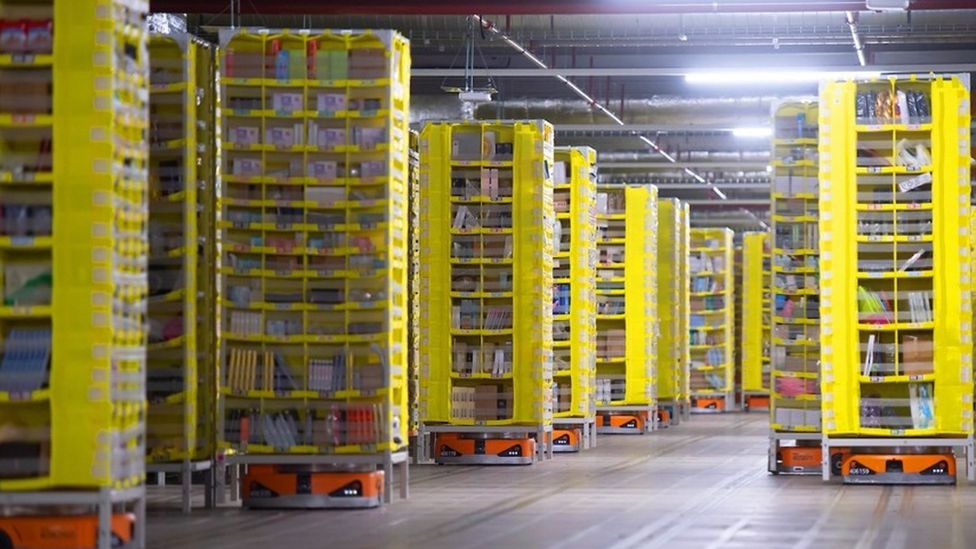Amidst the swiftly evolving landscape of digital retail, logistics hubs have emerged as a vital element for winning. These centres serve as the backbone of the distribution network, allowing businesses to effectively keep, wrap, and send items to consumers around the planet. As e-commerce continues to increase at an unprecedented rate, grasping the functions available by distribution centres becomes crucial for both sellers and buyers alike.
Such facilities not only optimize the transaction process but also boost customer happiness through speedier delivery periods and better inventory management. They handle all aspects from taking in and holding products to retrieving, boxing, and shipping purchases. By utilizing state-of-the-art technology and refined infrastructure, these centres enable retailers to concentrate on what they do best—developing remarkable products and marketing them effectively—while putting the difficulties of distribution in the hands of experts.
What is a Fulfilment Centre?
A fulfillment centre is a dedicated storage facility that plays a important role in the digital retail ecosystem. It serves as a primary hub for accepting, storing, and distributing products to clients. When an online shopping business receives an purchase, the fulfillment centre handles picking the items from their inventory, preparing them, and dispatching them to the client's location. This efficient process is essential for guaranteeing timely shipping and improving customer satisfaction.
These facilities are fitted with state-of-the-art technology and systems that help manage inventory efficiently. By using software for inventory management and purchase processing, businesses can optimize their stock levels and reduce the risk of overselling or running out of popular items. Additionally, many fulfilment centre s offer extra services such as handling returns and product assembly, which allow retailers to enhance their offerings while focusing more on sales and promotion.
Working with a fulfillment centre can greatly enhance an digital retailer's efficiency and growth potential. Instead of handling logistics in-house, companies can leverage the expertise and resources of fulfillment providers, allowing them to grow their reach and reduce shipping times. This partnership enables businesses to scale quickly without the weight of large initial investments in storage and logistics infrastructure.
Main Responsibilities of Distribution Centres
Fulfillment centers play a crucial role in the logistics of e-commerce by overseeing various operational tasks that enhance order processing. One of their primary functions is stock management. These facilities keep products in a structured manner, enabling for easy access and accurate stock tracking. This organization helps ensure that retailers can easily locate items for order fulfillment, shortening the time between order placement and shipping.
A further essential function is order fulfillment. When a customer creates an order via the internet, distribution centers receive this information and retrieve the required products from their inventory. This operation often involves organizing, packaging, and preparing the items for shipment. By improving pick and pack operations, distribution centers enhance processing speed, ensuring that customers receive their orders swiftly and correctly.
Lastly, distribution centers manage shipping logistics, which is crucial in the digital commerce landscape. They coordinate shipping methods, mark packages, and communicate with carriers to ensure on-time delivery. By leveraging their connections with shipping providers and using data analytics for route optimization, fulfillment centers can offer cost-effective shipping options, ultimately improving customer satisfaction and retention.
A Prospect of Fulfilment in Online Shopping

As online shopping continues to change, fulfilment centres are modifying to satisfy the evolving demands of customers. The rise of online shopping has led to an rise in consumer expectations for quick delivery times and customized support. Fulfillment centers are investing in advanced technologies, such as robotics and AI, to optimize their processes and boost efficiency. This tech integration allows them to process orders faster and handleinventory more effectively, ultimately enhancing the customer experience.
Additionally, sustainability is becoming a key focus for fulfilment centres in response to growing ecological concerns. Shops are seeking green solutions for their supply chain and distribution processes. This includes optimizing packaging to reduce waste, applying energy-efficient practices, and investigating carbon-neutral shipping methods. By adopting sustainable methods, fulfillment centers not only fulfill regulatory requirements but also attract customers who prioritize eco-conscious responsible companies.
Looking ahead, the function of fulfilment centres will most likely expand as the need for multichannel sales increases. Companies are acknowledging the value of a seamless purchase journey that integrates online and physical avenues. Fulfilment centres are crucial in facilitating this strategy by providing flexible solutions like same-day delivery, buy online, pick up in store services, and returns processing. As these facilities continue to innovate and adjust, they will remain the foundation of e-commerce retail, guaranteeing that customers receive their orders promptly and quickly.
